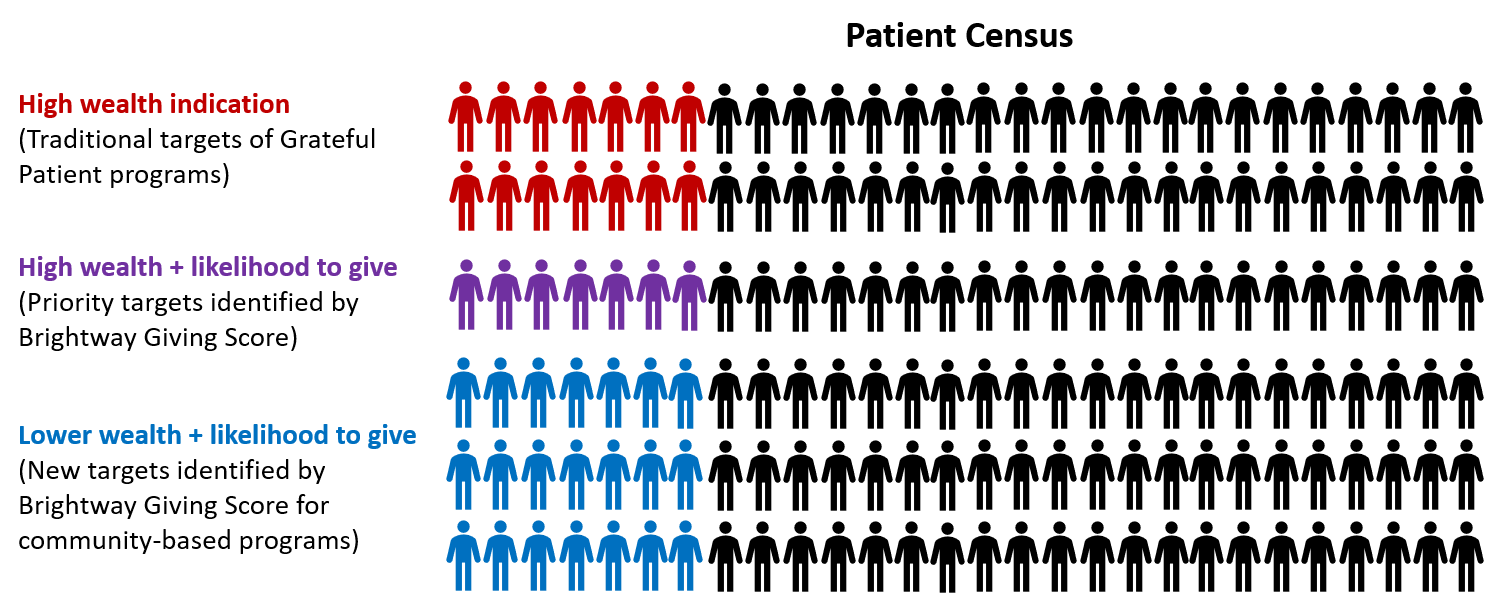In the past decade, we have seen a dramatic increase in the adoption of Grateful Patient program nationwide. According to the Report on Giving by the Association of Healthcare Philanthropy, U.S. hospitals raised $10.437 billion in 2018 which was a 2.9% increase from the previous year. In our previous blog, an Advisory Board survey of 108 hospitals found that more than half had Grateful Patient programs. While Grateful Patient programs may be growing and improving hospital donations, it’s overlooking a large group of donors that have a propensity to give.
Typically, hospital foundations do daily and/or weekly screens of patients to determine their wealth. This is done through wealth screening software. Then, hospital staff try to connect with those patients. A common assumption is that patients will donate as a gesture for a positive outcome from a recent healthcare experience. However, we have found that screening for wealth alone is not a good indicator of a patient’s likelihood to give. With some of our clients, our research has shown that approximately 20% of patients who would donate are overlooked with existing Grateful Patient screening technology and processes.
One way to prevent this error is to layer existing wealth screening technology with a predictive model that not only looks at historical patient data but also at other public information that provides a better giving profile of the patient. While wealth is a good indicator, it’s not the only one. Adding in behavioral indicators provides a better snapshot of the patient’s propensity to donate. This predictive model goes beyond wealth screening and shows:
- Patients with high wealth indicators and a low likelihood to give: These are typically the targeted patients with Grateful Patient programs that only use wealth screening technology.
- Patients with high wealth indicators and a high likelihood to give: This is the “sweet spot” for Major Gift Officers.
- Patients with low wealth indicators but are established within the community and would likely donate to a common cause for lower amounts: This is typically the missed opportunity in existing Grateful Patient program workflows.



Recent Comments